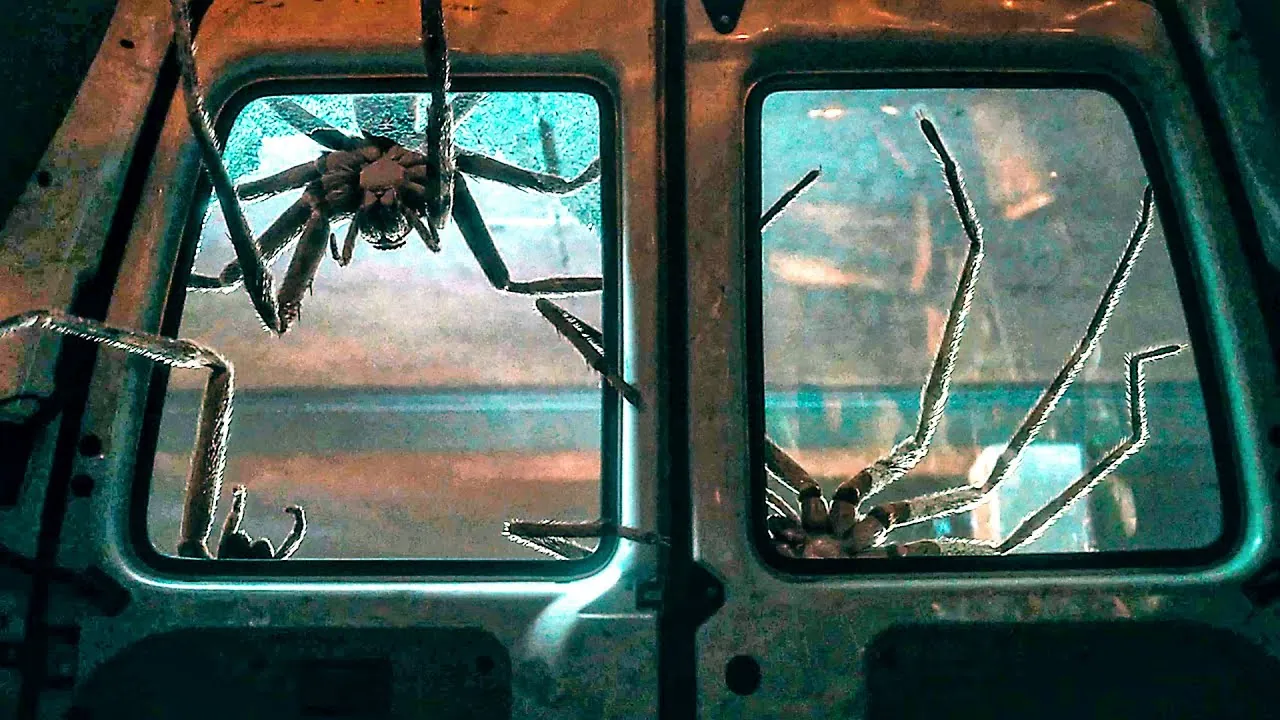Director Sébastien Vaniček tells The Daily Beast’s Obsessed, “You have to understand why you’re afraid of spiders.” And there is no cause for fear as soon as you realize it. The way spiders move is most likely the one factor that explains why people are so afraid of them almost universally.
Blessed with eight legs and numerous eyes all over their bodies, spiders are erratic in their direction. They can scuttle forward, backward, or side to side without warning or cause, running away from us, around us, or towards us as we bravely leap atop the closest chair, yelling in terror.
It was precisely this aspect of the spider that Vaniček wanted to nail. After sweeping the 2023 Venice Film Festival and sparking wild headlines about the army of real spiders used to build the film’s skin-crawling shocks, his feature debut Infested opens on Shudder this week. The horror factor is so great that Vaniček has already been hired to direct a forthcoming Evil Dead film.
“I love living things and small things,” Vaniček told The Daily Beast with much enthusiasm. Filming them in close-ups and seeing such enormous insects on a large screen was a delight. These are genuinely fascinating animals. To shoot them in this way and let others realize how fascinating and complicated they are is great.
Infected stars Théo Christine plays young Kaleb, an inhabitant of a run-down high-rise in the Paris outskirts. The building and the people who live within appear to be almost forgotten by the outside world, hardly able to afford the pleasure of renting small apartments with faulty plumbing and half-working lights.

In the course of tending to his bug collection, Kaleb discovers an unusual specimen one day: an unidentified original spider. Ignorant of the idea that it would soon give birth to a profusion of lethal progeny that will only grow in size until the entire structure is overrun and its occupants are placed under quarantine, he takes it home.
They did utilize 200 spiders on the scene, but not all at once. “They can shoot for ten seconds, after which they are exhausted and you can’t get anything from them,” Vaniček said. You have to realize that they are incredibly flimsy beings. They desire to conceal and they are constantly terrified. After landing on the ground, they will bolt and look for cover in the shadows. After just ten seconds of running, they are exhausted. They don’t move, so you can hang them on the wall and I can shoot them.
The arachnids in the movie (even the ones made much larger by painstaking visual effects) are enormous huntsman spiders (Heteropoda maxima), which are native to Laos and now hold the record for the largest spider in the world by leg span. When choosing his little stars, Vaniček was seeking for those legs since, although appearing in a lot of horror films, tarantulas aren’t the kind of spider most of us are used to seeing in our homes.
“I wanted a spider that you kind of recognize because you know this type of spider, everybody will eventually have one in their shower,” he added. I enlarged them, though. And you can see they will run quite quickly with such large legs.

The huntsman is known for his quick bursts of speed, but happily, the film invented the lethal poison and enormous stature. Like the human protagonists, the spiders are uprooted and stuck in a place they don’t want to be. They are surrounded by stronger entities who don’t care about their welfare. The French title for the film, Vermines (vermin), is a little more nuanced, equating the insects with people as unwanted viewed as a bother or worse by the rest of society.
“It was a really interesting way to talk about xenophobia and the people who are judged for how they look or where they come from,” Vaniček added. Although they are little and not at all hazardous, I believe that spiders are the ideal example because nobody wants one in their living room or bathroom.

They get instant judgment because we don’t like their shape or appearance, not because they are harmful. Vaniček was emphatic that the spiders in the film—dangerous as they are—are never portrayed as the aggressors: “They are victims since they were stolen from their homeland, they don’t want to dwell in this building, and they are assaulted by everybody. There isn’t a scene in the film where the spider launches an attack if you watch it from the spider’s point of view. People constantly attack them, and they stand up for themselves.
Not far from the Arènes de Picasso, a drum-shaped housing complex dominated on both ends by huge windowed cylinders that like something out of a Blade Runner film, Vaniček grew up. It is an amazing architectural piece that immediately makes me think of containers, traps, and other enclosed areas.
“We study the suburbs of France, and I’m from the suburbs,” he said. The same myth is always told about how suburbanites handle issues: you have to put them in a box and let them go; they will work themselves out. The way that the outside world will assist us in resolving the issues within the suburbs is the main focus of [the movie]. And opening the box is always the solution.

